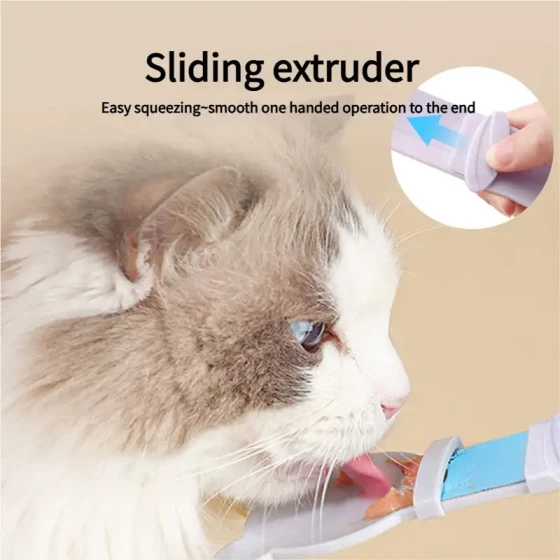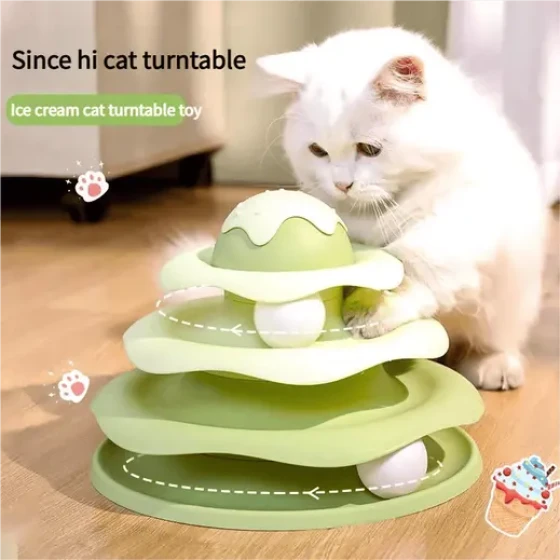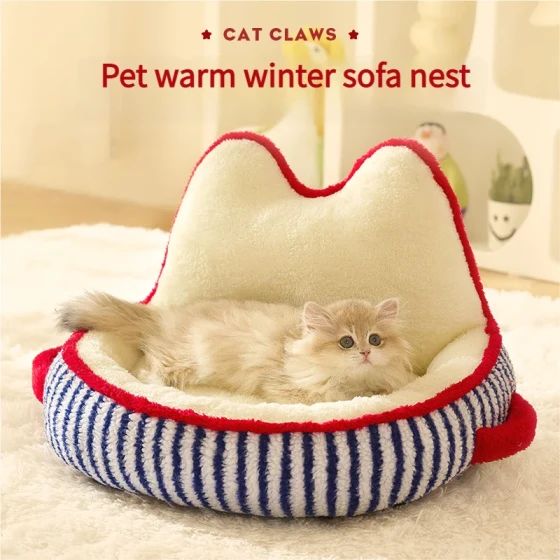Why It Is Not Recommended to Feed Stray Cats_Scientific Analysis of the Three Major Harms of Feeding Stray Cats
Stray cats, these figures roaming the corners of the city, often evoke people's compassion. Many cannot help but lend a hand, offering food in hopes that they can live better. However, what seems like a kind feeding behavior may actually bring a series of negative impacts to the stray cats themselves, the ecological environment, and human society. Therefore, from a scientific and rational perspective, we do not recommend feeding stray cats indiscriminately.

Scientific Analysis of the Three Major Harms Caused by Feeding Stray Cats
The harms that may result from feeding stray cats indiscriminately are not baseless but supported by scientific evidence. These harms are mainly reflected in the following three aspects:
1. Disruption of Ecological Balance, Becoming "Urban Predators"
Stray cats, in many cases, are not native species. Their ancestors are mostly domestic cats, and after long-term breeding and wandering, they have formed large populations. In urban environments, stray cats lack natural enemies and, due to human feeding, have a stable food source, which leads to an astonishing reproductive rate and rapid population growth.
Do not be fooled by their normally harmless appearance; hunting is an instinct engraved in cats’ genes. Even when well-fed, they will hunt other small animals out of curiosity and playfulness. These prey include birds, rodents, insects, reptiles, and even some small mammals. Shockingly, studies show that in some areas, the number of wild animals killed by stray cats annually is enormous and may cause drastic declines or extinction of certain species. For example, research estimates that in China, free-roaming and stray cats prey on between 2.6 to 5.5 billion birds annually, and 3.6 to 9.8 billion small mammals, with stray cats accounting for most of these.
This predation behavior poses a severe threat to the local ecological balance. As an invasive alien species, stray cats disrupt the original food chain and exert tremendous survival pressure on native species. Imagine an alien "apex predator" roaming the city; how can the small creatures originally living here survive? Over time, this may lead to the disappearance of some native species, damaging the city’s biodiversity.
2. Disease and Parasite Transmission, Threatening Human Health
Stray cats live in complex environments and contact many animal species, making them prone to carry various bacteria, viruses, and parasites. Unlike domestic pets, stray cats usually do not have regular check-ups or vaccinations, so they have a higher chance of carrying pathogens. When we feed stray cats and come into close contact with them, we may risk infection.
Common diseases that stray cats may spread include:
- Cat Scratch Disease: Caused by Bartonella henselae, mainly transmitted to humans through cat scratches or bites, potentially leading to swollen lymph nodes, fever, and other symptoms.
- Toxoplasmosis: Toxoplasma is a parasite for which cats are the definitive hosts. Infection in humans often shows no symptoms if immune systems are normal, but it can cause serious consequences such as fetal deformities or miscarriage in pregnant women, immunocompromised individuals, and children.
- Ringworm: A fungal infection causing skin diseases easily transmitted between cats and humans, characterized by circular red patches and very stubbornness.
- Rabies: Although not all stray cats carry the rabies virus, rabies is a fatal disease with near 100% mortality, mainly transmitted through bites or scratches from infected animals. Stray cats' complex living environment increases their risk of contact with infected animals.
Besides the above diseases, stray cats may carry external parasites like fleas and ticks, which not only cause discomfort to the cats but may also bite humans and spread diseases. Additionally, stray cats' feces may carry pathogens, contaminating the environment and posing a public health threat.
3. Causing Overpopulation and Aggregation, Triggering Social Problems
Feeding provides stray cats with a stable food source, greatly enhancing their survival rate, especially among kittens. With abundant food, stray cats reproduce more frequently, leading to geometric population growth. One unneutered pair of cats and their offspring can, theoretically, reproduce thousands of cats within a few years.
The increase in stray cat populations brings a series of social problems:
- Noise Disturbance: Stray cats in heat produce piercing cries, especially at night, severely disturbing nearby residents' rest.
- Environmental Sanitation Issues: Stray cat feces, leftover food scraps, and parasites they bring pollute the environment, produce odors, and affect city appearance.
- Conflicts Between Humans and Cats: Aggregated stray cats may compete for territory and even attack humans or other pets. Cats too familiar with humans may be captured or abused by malicious individuals due to their reduced vigilance.
- Traffic Safety Hazards: Stray cats may cross roads, increasing the risk of traffic accidents. In cold weather, they may hide in car engine compartments for warmth, causing vehicle damage or injury and even death to themselves.
Although the initial intention of feeding is kindness, long-term and fixed-point feeding behavior can lead to stray cats gathering in specific areas, exacerbating the above problems. This does not truly help stray cats; on the contrary, it may worsen their living conditions and cause trouble for surrounding residents.
More Scientific Management Methods Than Feeding
Since indiscriminate feeding of stray cats has more disadvantages than benefits, how should we treat them? Professional animal protection organizations and related studies show that adopting scientific management methods is the key to solving the stray cat problem.
TNR (Trap-Neuter-Return) is a globally recognized humane method to control stray cat numbers. The core idea is to trap stray cats, perform neutering surgeries, then return them to their original locations. Neutered cats no longer reproduce, thus controlling population growth. At the same time, neutering reduces fighting and crying caused by heat cycles and lowers disease transmission risks.
TNR is not simply letting cats roam freely but requires long-term investment and multi-party cooperation. It involves efforts from animal protection groups, communities, property management, and volunteers. Large-scale, high-density neutering is necessary to effectively control stray cat numbers. During TNR, healthy kittens and adult cats suitable for living as pets are sent to shelters for adoption, which truly finds homes for them.
Besides TNR, promoting "adoption instead of buying" is also an effective way to reduce stray cat numbers from the source. Many people impulsively purchase pets but abandon them when difficulties arise, which is a major cause of the large number of stray animals. Encouraging adoption from shelters or rescue organizations gives homeless lives a second chance.
Frequently Asked Questions
- Are all stray cats aggressive? Most stray cats are wary of humans but not all are aggressive. Stray cats fed regularly by people may be more friendly, but this might increase their risk of harm.
- I only feed them occasionally, is that okay? Even occasional feeding at a fixed location may cause stray cats to gather, leading to the problems mentioned above.
- If we don’t feed stray cats, will they starve to death? Stray cats have survival abilities and can find food themselves, such as hunting mice and insects. Stopping feeding encourages them to disperse, reducing aggregation risks. Rather than temporarily satisfying their hunger through feeding, supporting scientific management methods like TNR fundamentally improves their living conditions.
- Stray cats catch mice, isn’t that beneficial? Stray cats do prey on mice but also on other harmless or even beneficial wildlife, causing greater ecological damage. Moreover, much of their hunting is driven by instinct rather than survival needs.
- What should I do if I see an injured or sick stray cat? It is recommended to contact local animal rescue organizations or professional veterinarians for help, rather than handling it yourself.
Conclusion
Feeding stray cats out of kindness is understandable, but it does not represent the best solution to the stray cat problem. Scientific analysis shows that indiscriminate feeding can disrupt ecological balance, spread diseases, and trigger social problems. True care should be based on scientific understanding and rational actions. Supporting and participating in TNR programs and promoting adoption instead of buying are more sustainable and responsible ways to manage stray animals. Let us help these small lives with scientific methods and coexist harmoniously with them in this city.
References
You Can Love Me, But Please Don’t Feed Me – Kun Yue Nature
Why Is Feeding Stray Cats Not Recommended? 14 Days of High Fever from a Cat Scratch – NetEase
If You Really Care About Stray Cats, Don’t Feed Them! – The Paper
Do You Know the Ecological Harm of Stray Cats? – The Paper
Trap-Neuter-Return – Wikipedia, The Free Encyclopedia
The Harm of Stray Pets in Beijing – Rotting Cat and Dog Corpses Easily Pollute Water Sources (Photo) – Sina News
Stray Cats – Wikipedia, The Free Encyclopedia
Is Feeding Stray Cats Harming Them? What’s Your Opinion About This – Tencent
Stray Cat Neutering TNR: Cut Off Desire and Love, Happy Cat Life – Little Universe
Should We Feed Stray Cats Found on the Roadside? – Tencent News
Why Shouldn’t We Feed Stray Cats Arbitrarily_Canned Wet Cat Food – What’s Worth Buying
The 19th Big Question: Why Not Feed Stray Cats and Dogs? – Fanggezi
"Overfeeding" Stray Cats Is Not Charity, But Creating More Evil – Sina
Hold Back Your Overflowing Compassion! Stop Feeding Stray Cats!
Will Feeding Make Stray Cats More Numerous? Can Neutering Effectively Control Numbers and Reduce Nuisance? – Hangzhou Net
Woman’s Whole Family Infected with Ringworm After Adopting a Stray Cat; Can Pet Illnesses Spread to Humans? – CCTV
Nearly Hundreds of Thousands of Stray Cats on Shanghai Streets? Learn About the "TNR Model"→ – Mobile Guangming Net
Should We Feed Stray Cats in Residential Areas? Can We Care for Animals Without Disturbing Residents? – Hangzhou
"Three-Pronged Approach" Mobilizes to Manage Community Stray Cats – Shanghai Pudong
Stray Cat TNR Project Guidance Manual
Do You Know the Ecological Harm of Stray Cats? They Kill Tens of Billions of Small Animals Every Year – Tencent News
Controversy Over Feeding Behavior Following Community Stray Cat Surge - A01 Section – Peninsula Morning Post
A Letter to Yuzhong County Urban Management Bureau, Lanzhou City (2017) – Animals Asia
The "10 Billion Killer" Debate Behind: Need Science, Also Ethics – News
Feline Immunodeficiency Virus – Wikipedia, The Free Encyclopedia
Rescue or Extermination: The Misguided Governance of Stray Animals
Micro Meow Smile, Re-Loving Stray Cats – Dudu Ke
Will Contacting and Rescuing Stray Cats Cause Virus Infection? Knowing These Three Points Means No Fear – Sina
Chinese Science News: 12.1 Billion Animals Die! Stray Cats, Should We Still Feed?
Chinese Science News: 12.1 Billion Animals Die! Stray Cats, Should We Still Feed?
"Now, Popular Science on the Harm of Stray Cats Also Counts as Animal Abuse" _Mobile NetEase Wild Animals Section
Response to Debate | Whether Stray Cats Constitute an Ecological Threat and How to Conduct Future Research and Management





